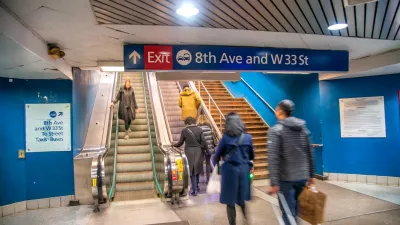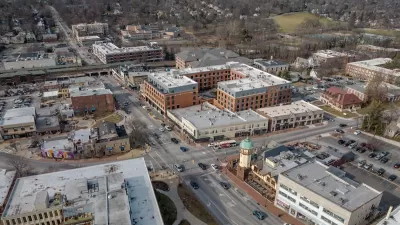A meta-study shows that public realm interventions can help reduce crime rates.

New research from the Futures Institute reveals a link between the design of the built environment and crime rates, showing a possible way to reduce the need for police officers through “preemptive streetscape improvements.”
As Gersh Kuntzman explains in Streetsblog USA, “Simple improvements to the built environment — such as the lowest-hanging fruit of bright street lights as well as traffic-calming strategies — play an outsized and underappreciated role in reducing the violence that is plaguing so many communities and can help alter the default solution of sending in more cops.”
A section of the report titled “Investments in Built Design & Community Infrastructure” highlights the public space interventions that can help reduce crime including street design, access to transit, green space, and street lighting. The report points to reduced access points to neighborhoods as one way to reduce crime (though some urbanists might bristle at the thought of cul-de-sacs as a crime prevention tool).
FULL STORY: Fighting Crime Without Cops: New Report Shows Key Role of Streetscape

Trump Administration Could Effectively End Housing Voucher Program
Federal officials are eyeing major cuts to the Section 8 program that helps millions of low-income households pay rent.

Planetizen Federal Action Tracker
A weekly monitor of how Trump’s orders and actions are impacting planners and planning in America.

The 120 Year Old Tiny Home Villages That Sheltered San Francisco’s Earthquake Refugees
More than a century ago, San Francisco mobilized to house thousands of residents displaced by the 1906 earthquake. Could their strategy offer a model for the present?

Alabama School Forestry Initiative Brings Trees to Schoolyards
Trees can improve physical and mental health for students and commnity members.

NYC Outdoor Dining Could Get a Re-Do
The city council is considering making the al fresco dining program year-round to address cost concerns from small businesses.

HSR Reaches Key Settlement in Northern California City
The state’s high-speed rail authority reached an agreement with Millbrae, a key city on the train’s proposed route to San Francisco.
Urban Design for Planners 1: Software Tools
This six-course series explores essential urban design concepts using open source software and equips planners with the tools they need to participate fully in the urban design process.
Planning for Universal Design
Learn the tools for implementing Universal Design in planning regulations.
Ada County Highway District
Clanton & Associates, Inc.
Jessamine County Fiscal Court
Institute for Housing and Urban Development Studies (IHS)
City of Grandview
Harvard GSD Executive Education
Toledo-Lucas County Plan Commissions
Salt Lake City
NYU Wagner Graduate School of Public Service




























